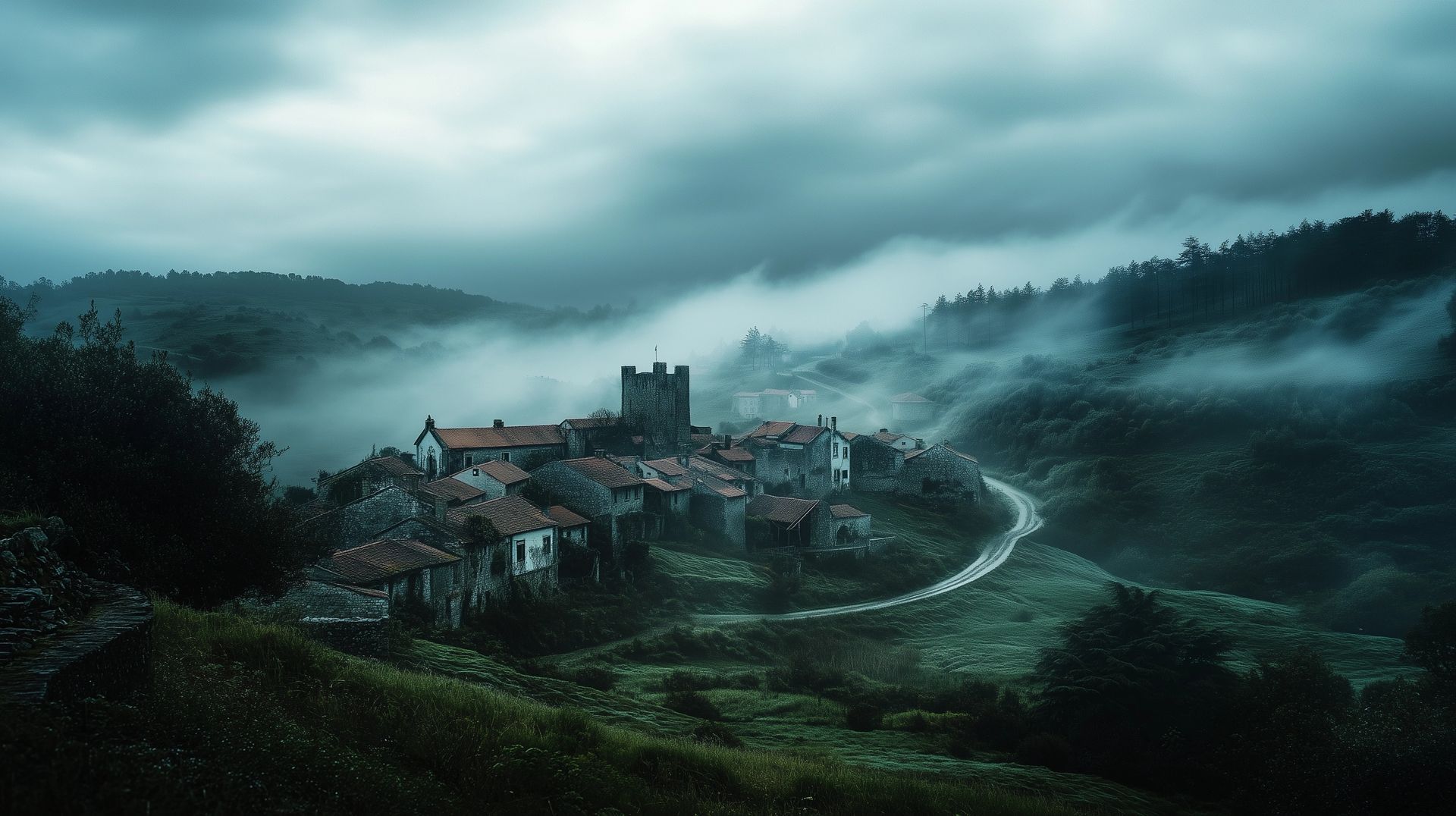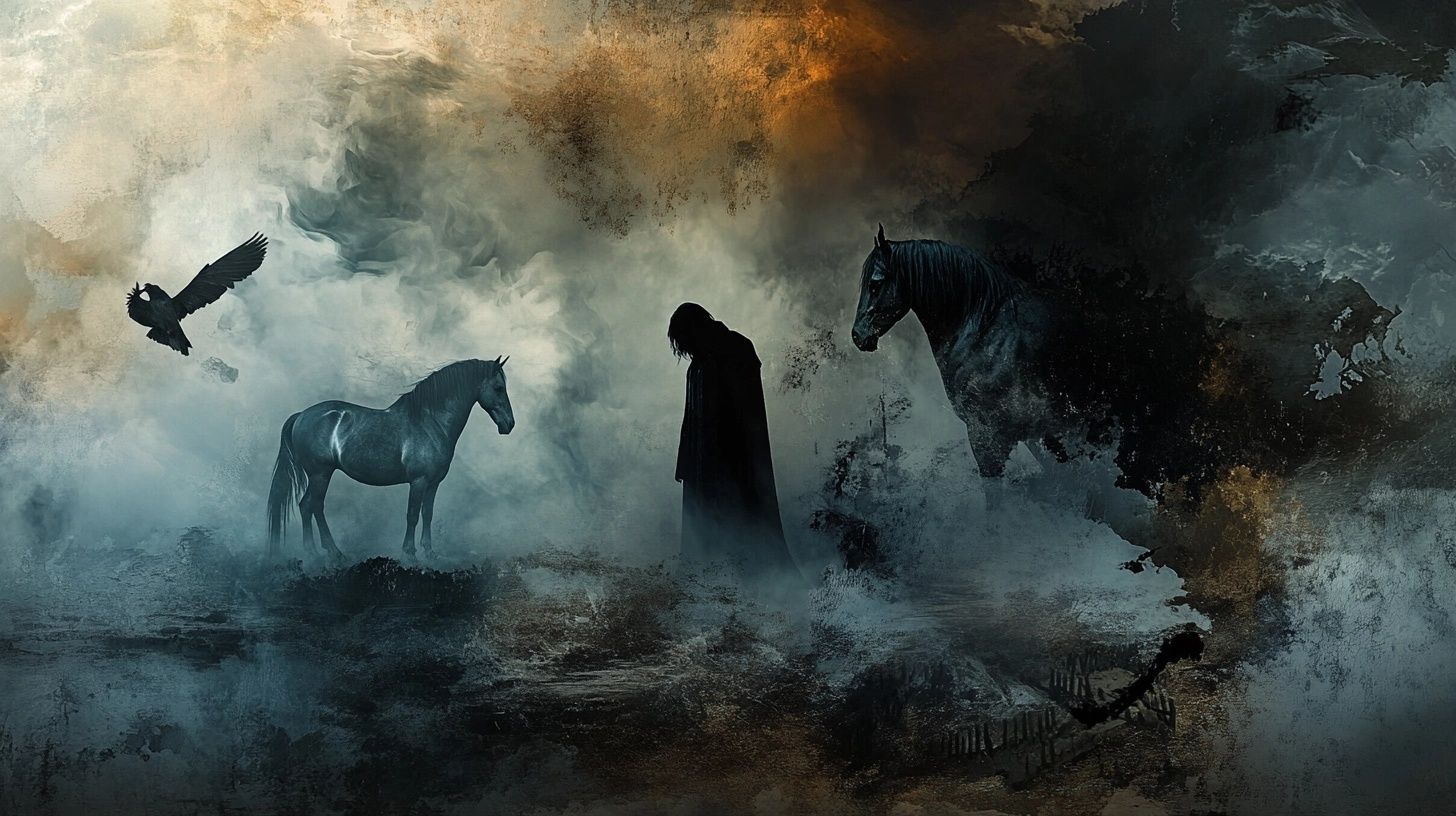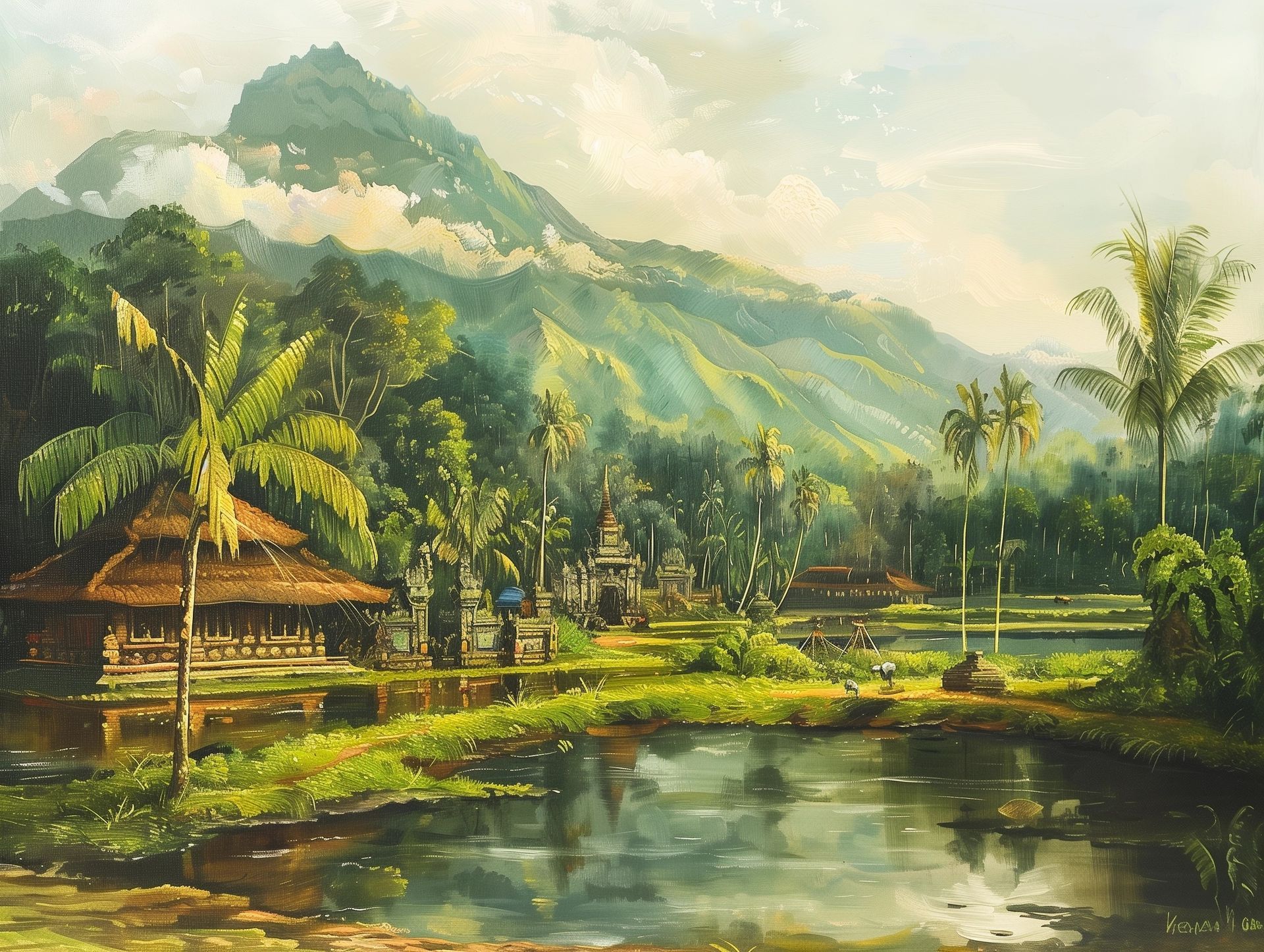Portugal may be known for its stunning landscapes, delicious wines and soulful Fado music, but behind the postcard-perfect images lies a treasure trove of folklore that’s as rich and varied as the country itself.
From tragic love stories that could give Shakespeare a run for his money to ghostly ships that make you question your next seaside vacation, Portuguese folklore is filled with curious tales that have been passed down through generations.
So, grab a coffee, settle in and let’s take a quick trip into the mystical and sometimes bizarre world of Portuguese myths, legends and folktales.
Published: 19th Sep 2024
Updated: 20th Nov 2024
Author: Mythfolks
1. The legend of Pedro and Inês: a tragic love story
Love stories often come with a side of heartbreak, but the tale of Pedro and Inês takes tragedy to a whole new level.
This story begins in the 14th century, in the royal courts of Portugal, where Pedro, the Crown Prince, fell deeply in love with Inês de Castro, a lady-in-waiting. There was just one small problem: Inês wasn’t the woman Pedro was supposed to marry.
In an era when royal marriages were more about political alliances than love, Pedro was pressured to wed Constança, a Spanish princess, to secure ties with Castile.
Despite the marriage, Pedro’s heart belonged to Inês, and the two carried on a passionate affair. Their love was an open secret, and after Constança’s death, Pedro brought Inês back to court, much to the displeasure of his father, King Afonso IV.
The King saw Inês as a threat, fearing her influence over Pedro could destabilize the kingdom. In a decision that would haunt him - and history - Afonso had Inês assassinated in 1355. Her murder was brutal, but Pedro’s response was even more chilling.
Upon becoming king two years later, he exhumed Inês’ body, crowned her as his queen posthumously, and allegedly forced the court to kiss her decomposed hand in a grotesque act of devotion.
Today, the story of Pedro and Inês is often compared to other legendary tragic romances, such as Romeo and Juliet. It’s a tale that has inspired countless works of art, literature, and even opera.
The tragic love story also serves as a grim reminder of the consequences of unchecked power and the lengths people will go to for love - sometimes to the point of madness.

2. The Enchanted Moura: guardians of hidden treasures
Portugal is a land rich with history, and, according to legend, it’s also rich with hidden treasures, guarded by the mysterious and enchanting Mouras Encantadas.
These mythical beings are often depicted as beautiful women with long hair and an ethereal glow, living in secret places like caves, wells, or ancient ruins. Their role? To protect huge hidden treasures, usually left behind by retreating forces during their retreat from the Iberian Peninsula.
The Mouras aren’t your average fairy-tale damsels, though. They're powerful, magical beings who can bestow great fortune - or terrible misfortune - on those who encounter them.
The stories vary, but the core element remains the same: if you find a Moura, you’re standing at the crossroads of incredible luck or disastrous consequences.
One of the most famous Moura tales comes from the Alentejo region, where it’s said that a Moura guards a treasure hidden beneath a massive boulder.
Legend has it that on the eve of São João, the Moura can be seen combing her hair with a golden comb, waiting for the right person to free her from her enchanted state. But beware - the task is not for the faint-hearted, and many have tried and failed to break the spell.
In modern times, the Moura legend speaks to our fascination with the unknown (and the allure of hidden riches).
As Portugal continues to preserve its heritage, the story of the Mouras remains a symbol of the treasures - both tangible and intangible - that lie beneath the surface, waiting to be discovered by those worthy of them.

3. The tale of the Rooster of Barcelos
If you’ve ever visited Portugal, you’ve likely encountered the colorful image of a rooster, perched proudly on souvenirs, ceramics and even in homes.
This is the Rooster of Barcelos, a symbol of justice and good fortune rooted in a centuries-old legend that’s as quirky as it is enduring.
The story goes that in the small town of Barcelos, a Spanish pilgrim on his way to Santiago de Compostela was wrongfully accused of theft.
Despite his pleas of innocence, the local authorities were unmoved and he was sentenced to hang.
In a final attempt to prove his innocence, the pilgrim requested to speak with the judge, who was hosting a banquet at the time. The judge, perhaps out of curiosity or bemusement, allowed the man his final wish.
As the story unfolds, the pilgrim pointed to a roasted rooster on the judge’s banquet table and declared that as a sign of his innocence, the rooster would crow before his execution. The judge, not believing a word, dismissed the claim but ordered the rooster to be left untouched.
To everyone’s astonishment, as the pilgrim was about to be executed, the rooster did indeed crow, startling the judge and convincing him of the man’s innocence.
The judge rushed to the gallows and spared the pilgrim’s life just in time. The pilgrim later returned to Barcelos to carve a cross in honor of Saint James and the miracle that saved him.
The Rooster of Barcelos has since become one of Portugal’s most beloved symbols, representing not just justice, but also the power of faith and the idea that truth will always find a way to reveal itself.
In modern Portugal, the rooster is a symbol of good luck and a reminder that sometimes, the improbable really can happen.
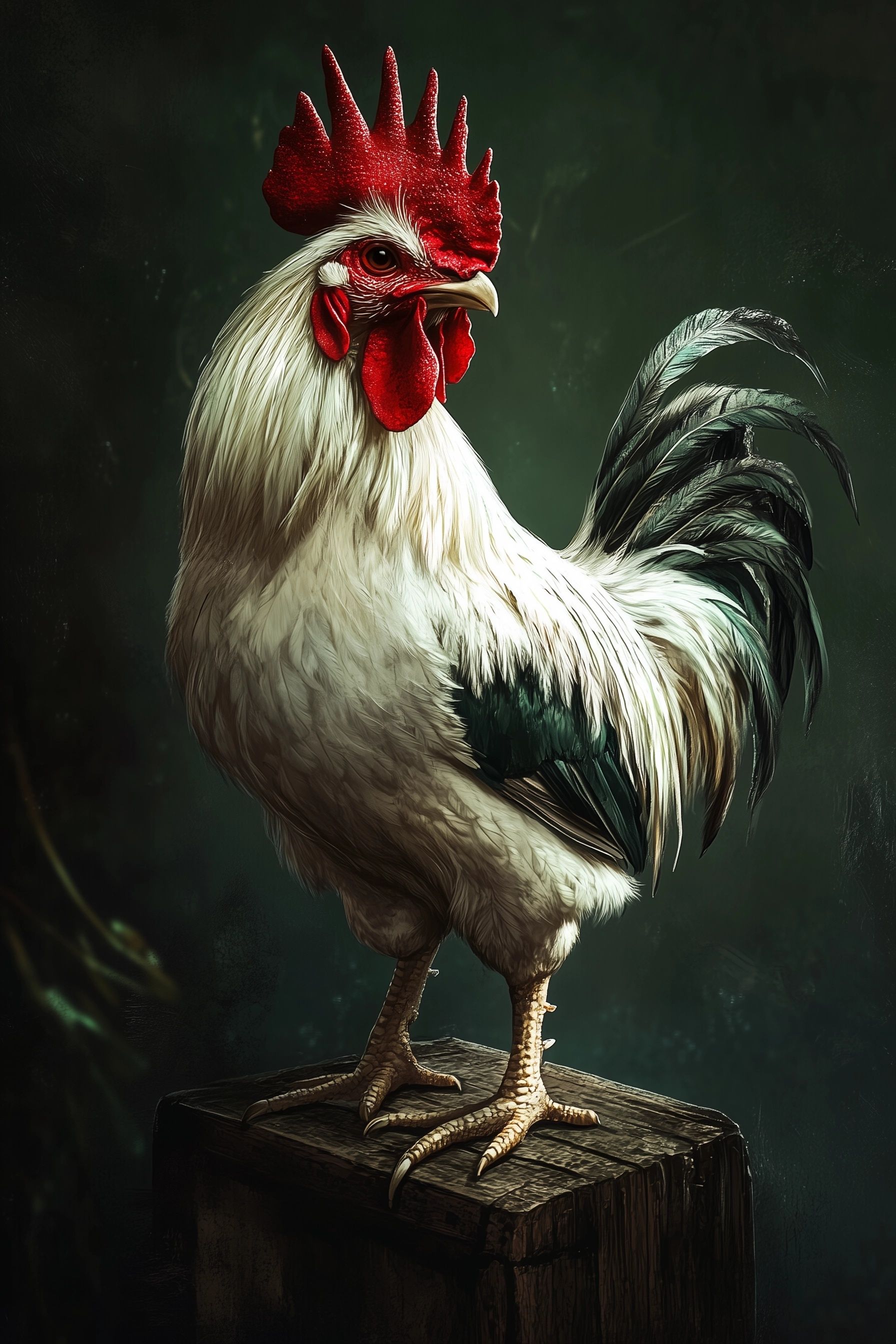
4. The Feast of São João:
If you find yourself in Portugal on the night of June 23rd, don’t be surprised if you see people leaping over bonfires, whacking each other on the head with plastic hammers and launching illuminated paper lanterns into the sky.
Welcome to the Feast of São João, one of Portugal’s most vibrant and beloved celebrations, particularly in the northern city of Porto.
The origins of this festival are a mix of Christian and pagan traditions. Officially, it’s a celebration of Saint John the Baptist, but the festival also has deep roots in ancient rituals dedicated to the sun and fertility.
The bonfires, for instance, are a nod to the summer solstice and are believed to bring good luck and ward off evil spirits. Jumping over them is an act of bravery and a way to purify oneself - though most people today do it more for the thrill and the Instagram content.
Another peculiar tradition is the use of garlic flowers. Festival-goers carry them around and gently tap others on the head as a sign of affection and good wishes.
The garlic, with its strong odor, is believed to have protective qualities, driving away bad spirits and ensuring a good harvest.
Today, the tradition has taken a twist with the introduction of those plastic hammers that make a squeaky noise when they hit their target.
It’s all in good fun and the streets of Porto come alive with the sound of laughter, music and the scent of grilled sardines - a must-have dish during the festivities.
The Feast of São João is a celebration of community, vitality and the enduring connection between people and the natural world. In a fast-paced, digital age, this festival offers a chance to reconnect with ancient traditions and the simple joys of life.

5. The Phantom Ship of São João Baptista
Portugal’s long coastline has been the backdrop for countless maritime legends and this legend dates back to the 16th century, when the Portuguese ship São João Baptista set sail on a treacherous voyage. The ship never reached its destination and all aboard were presumed lost.
But soon after, sailors and fishermen began reporting sightings of a ghostly ship, resembling the São João, appearing in the mist near the Viana do Castelo coast. The ship was always supposedly seen before a storm or a disaster at sea, a warning to those who dared to venture out.
The details of the ship’s appearance vary depending on who’s telling the story, but one thing remains constant - a sense of dread that accompanies its sighting.
Some say the ship is crewed by the souls of the damned, forever doomed to sail the seas as punishment for their sins. Others believe it’s a divine warning, a last chance for sailors to turn back before it’s too late.
In modern times, the tale of the Phantom Ship continues to be told, especially among fishing communities who know all too well the dangers of the sea.
It's a reminder of the respect owed to the forces of nature and the ever-present possibility of the unexpected.

6. The Werewolf of Trás-os-Montes
While werewolves might be more commonly associated with the misty forests of Transylvania or the eerie moors of England, Portugal has its own version, known as the Lobisomem.
In Portuguese folklore, the Lobisomem is a man who transforms into a wolf, usually as a result of a curse. The curse is often inherited, passed down through generations and is typically activated under the light of a full moon.
Unlike the Hollywood version of the werewolf, the Lobisomem of Trás-os-Montes is not always a violent beast. In fact, the transformation is seen more as a tragic fate than an invitation to wreak havoc. The cursed individual is often tormented by their condition, leading a life of isolation and fear.
One popular version of the story tells of a seventh son, doomed to become a Lobisomem because of his birth order. This unfortunate soul is said to roam the countryside at night, hunting livestock and terrifying villagers, before returning to his human form at dawn, filled with guilt and dread.
The only way to break the curse, according to legend, is through a series of complex rituals—often involving religious intervention—or by killing the creature in its wolf form, which is easier said than done.
In today’s world, the Lobisomem serves as a metaphor for the darker aspects of human nature and the fears that still linger in rural areas where the modern world hasn’t entirely erased the past. The legend of the Lobisomem also reflects the struggles of those who feel out of place or burdened by circumstances beyond their control, making it a surprisingly relatable tale, even in contemporary times.

7. The Legend of the Seven Cities
The Azores, a remote group of islands in the middle of the Atlantic Ocean, are known for their stunning landscapes, volcanic craters, and lush greenery.
But beneath the beauty of these islands lies one of Portugal’s most intriguing legends: the Legend of the Seven Cities; a tale about a sunken kingdom, lost beneath the waters of a twin lake in the Sete Cidades region of São Miguel Island.
The legend tells of two star-crossed lovers, a princess and a shepherd, who lived in a kingdom in a valley surrounded by high mountains.
Their love was forbidden, as the princess was betrothed to a prince from a neighboring land. When the king discovered their secret meetings, he forbade the lovers from seeing each other again.
Heartbroken, the two met one last time by the lakes in the valley, where they cried bitterly over their doomed love. As their tears fell, they formed two lakes - one blue, representing the princess’s eyes, and one green, reflecting the shepherd’s.
Soon after, a cataclysmic event - whether an earthquake, volcanic eruption, or divine intervention - caused the entire kingdom to sink into the earth, leaving only the two lakes as a reminder of the tragic love story.
The sunken kingdom and its lost civilization have since become the stuff of legend, with some believing that remnants of this forgotten world still lie beneath the waters, waiting to be discovered.
In modern times, the Legend of the Seven Cities continues to captivate the imagination, not just as a romantic tale, but as a symbol of the mysteries that the natural world holds.
The lakes themselves are a popular tourist attraction, drawing visitors who are eager to see the fabled spot where love and loss created one of Portugal’s most beautiful and mysterious landscapes.
The legend also taps into a broader human fascination with lost civilizations, the unknown and the idea that beneath the surface of our everyday world lies something ancient, hidden, and perhaps waiting to be rediscovered.

8. The Witch of Évora
Évora, a city steeped in history, is home to one of Portugal’s most infamous figures: the Witch of Évora.
This story, deeply rooted in local lore, tells of a powerful witch who lived during the Middle Ages, feared and respected in equal measure for her extraordinary magical abilities.
She was said to possess knowledge of potions, spells and dark magic, which she used to influence events, cure ailments and sometimes, to exact vengeance.
The Witch of Évora was also a woman of great intelligence and learning and according to some versions of the tale, she even had connections to the local clergy, who secretly sought her help for matters they couldn’t handle through conventional means.
But her power came at a price. The people of Évora believed that she had made a pact with the Devil, trading her soul for the knowledge and abilities she wielded.
The legend goes that the witch’s downfall came when she attempted to use her magic to overthrow the local authorities. Her plan was foiled, and she was eventually captured and put on trial for heresy and witchcraft.
Some say she was burned at the stake, while others claim she vanished into thin air, leaving behind only a wisp of smoke and a chilling reminder of her power.
Today, the story of the Witch of Évora is a symbol of the complex relationship between knowledge, power and morality. It serves as a cautionary tale about the dangers of seeking power at any cost and the moral dilemmas that come with it.
Her story resonates with contemporary themes of empowerment, rebellion and the consequences of stepping outside the boundaries of accepted behavior.
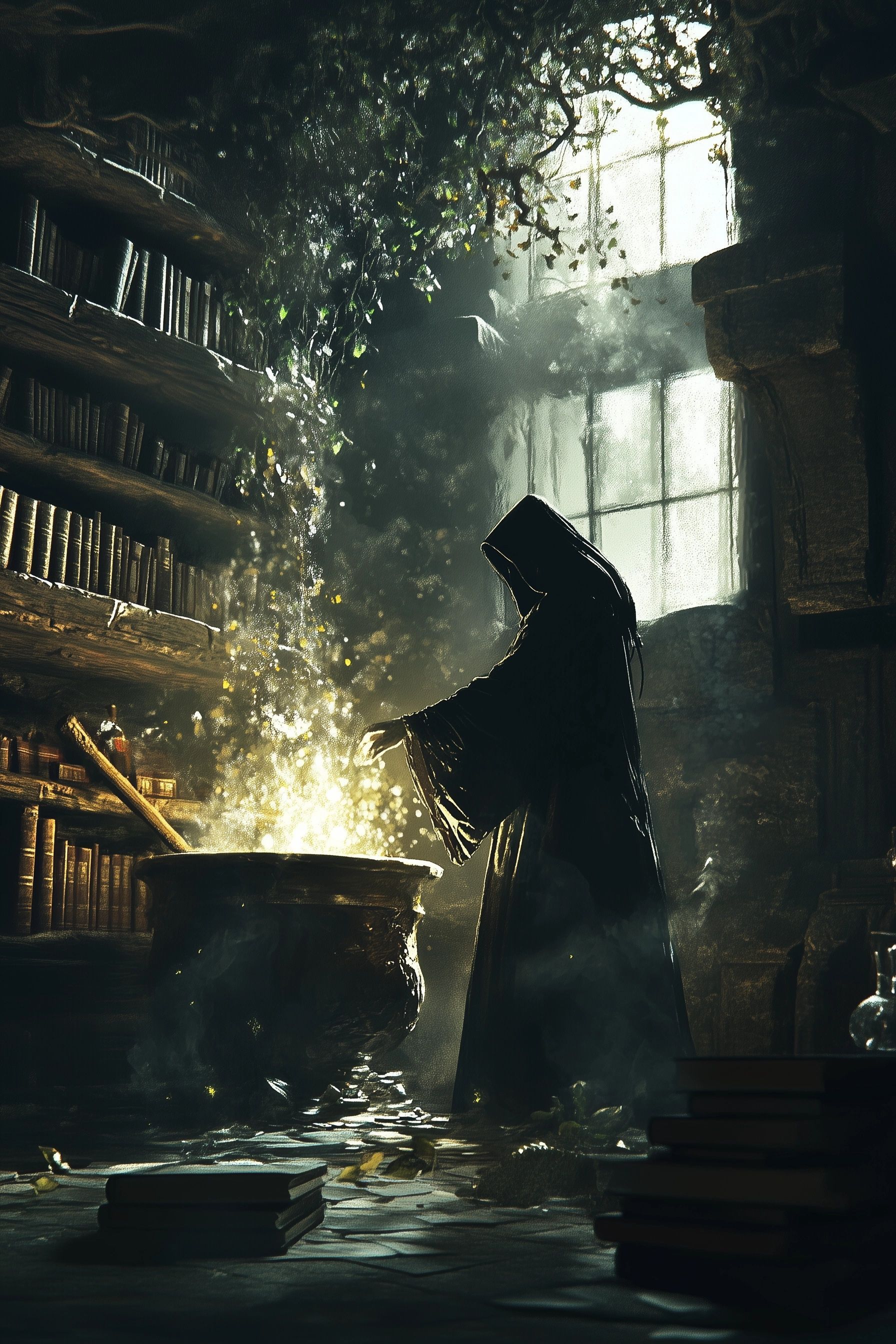
9. The Legend of the Green Wine
Portugal’s Vinho Verde, or "Green Wine," is one of the country’s most distinctive and beloved beverages.
But behind this refreshing wine lies a legend that speaks to the themes of abundance, gratitude and divine favor.
The story goes that in a small village in the Minho region, there lived a poor farmer who worked tirelessly to cultivate his land, but to no avail.
No matter how hard he tried, the soil remained barren and his crops withered under the relentless sun. Desperate and on the brink of despair, the farmer prayed for a miracle, asking the heavens for a sign of hope.
One day, as he tended to his fields, a mysterious stranger appeared - a wise old man with a long white beard. The stranger told the farmer to plant his vines differently, with more care and attention and promised that if he did so, the land would yield a bountiful harvest.
The farmer followed the advice, and to his amazement, the vines flourished, producing grapes that were unlike any he had seen before.
When the time came to harvest, the grapes were abundant and the wine they produced was so fresh and crisp. The farmer, grateful for his newfound fortune, shared the wine with his fellow villagers, who praised it as a divine gift.
From that day forward, the wine became known as Vinho Verde, not because of its color, but because it symbolized the green, fertile land that had finally come to life.
In modern Portugal, the tale continues to resonate with those who appreciate the simple pleasures of life, reminding us that even in difficult times, there is always the potential for something beautiful to grow - as long as we remain patient, attentive and grateful for the gifts we receive.

These stories and legends from Portuguese folklore offer a window deep into the soul of a nation that has been shaped by centuries of history, myth and tradition. From the tragic love of Pedro and Inês to the mysterious Mouras, these tales reveal a culture that values love, wisdom, justice and respect for the unknown forces that govern our world.
So, the next time you find yourself in Portugal, whether you're exploring a busy city or a quiet village, take a moment to reflect on the folklore that lives just beneath the surface. You might find that these stories, much like the treasures guarded by the Mouras, hold more than just historical significance - they offer wisdom that’s as relevant today as it was centuries ago!
Explore more folklore tales from other countries & cultures
Greenlandic folklore & mythical creatures
The wild and remote wilderness of Greenland has created a series of fascinating folklore stories. Discover them here.
It's not all fairytales in Denmark, discover the light, the dark and the weird folklore here.
16 short tales from Indonesian folklore
Including the baby born from a cucumber - read about it now!


